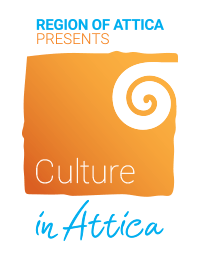The Excavation Museum, supported by the Bank of Greece, officially opened its doors to the public in June 2024. Located on -1 level, directly beneath the Acropolis Museum, it is broadly known as “the Museum below the Museum”.
The excavations of the “Makriyannis property”, prior to the construction of the Acropolis Museum, uncovered the remains of a small ancient neighborhood in Athens. Offering access since 2019, this site has allowed visitors to explore houses with courtyards and cisterns, mansions with private baths, workshops and other fascinating structures that were brought to light.
The Excavation Museum was inaugurated in 2024, showcasing the movable artifacts from the excavation as part of a permanent exhibition. Situated on the southern edge of the site, alongside the ancient neighborhood remains, the Museum covers an elongated area of approximately 210 square meters.
The Excavation Museum features 1,150 exhibits that vividly reflect 4,500 years of continuous life and creation in this ancient community, located just beneath the Ancient Rock of Acropolis. Spanning from 4,000 BC to the 12th century AD, these artifacts narrate the story of generations that have followed one another through the ages.
Immersed within the innovative setting of a semi-open permanent exhibition, visitors to the Excavation Museum can explore and admire daily objects from bygone eras. These items were used by Athenians, foreigners, immigrants, slaves, free citizens, traders, workers and craftsmen, offering a fascinating glimpse into this ancient corner of the city of Athens.
Exhibits are just too many, ranging from a slit home device discovered in a house’s cistern, marking the destruction of Athens by Sylla’s army in 86 BC, to fragments of pots, kylixes, figurines, lekythoses, hydrias, inscriptions, coins and numerous everyday items once used by the people who lived here.
The permanent exhibition of the Excavation Museum seamlessly interacts with the remains of the ancient neighborhood, shedding light on historical aspects, creating emotions and sparking the imagination.
Designed with a minimalist approach, the exhibition is easily identifiable, utilizing the unique characteristics of the space. The setting creates an unconventional yet well-balanced atmosphere, perfectly complementing the natural essence of the Museum.
A blend of colors, textures and materials interact to beautifully highlight the 1,150 exhibits in a way that is impressive and subtle at the same time. Artifacts are thoughtfully arranged inside a 34-meter-long display case, placed into a closed hall with glass walls that offer an unobstructed view of the archaeological excavation.
The first section of the exhibits focuses on the period before the neighborhood was incorporated into the walled city. It features a range of artifacts related to household and craftsmanship activities, as well as burial practices of elderly citizens on the outskirts of the ancient city.
The second section explores the neighborhood after it became part of the city’s network. The objects of this larger section narrate the daily life of its residents, including household organization, various activities of men, women and children, trade and transactions, the places they frequented, their work, communication methods and much more.
The final section is located into an enclosed hall with transparent glass walls. Here, exhibits highlight the spiritual life of citizens, the gods they worshipped, their beliefs and philosophical, religious, and aesthetic reflections.
Until the end of the ancient world, the area had been almost unfailingly inhabited. Each generation left its own mark, either by repairing existing buildings or by building new ones on top of the ruins. This sequence is also evident in their daily lives, as reflected in the diverse exhibits. Visitors to the Excavation Museum have the unique opportunity to experience a rich blend of architectural, cultural, religious, aesthetic and other remnants.
More than just a visit, the Excavation Museum offers an immersive experience. Through a wealth of objects left behind by those who lived here from 4,000 BC to the 12th century AD, visitors get the chance to witness a small piece of Athens being brought back to life, thousands of years later.
Photo Credits: https://www.theacropolismuseum.gr/en/excavation-museum




